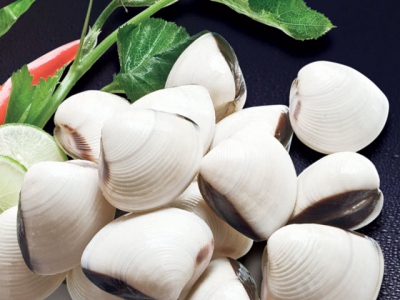Clam exports maintain a strong increase in August

While exports of many seafood products dropped sharply in August, exports of bivalve especially clam still show signs of strong growth.
Clam exports still strongly increased in August. Photo: TL.
According to the Vietnam Association of Seafood Exporters and Producers (VASEP), the exportation of bivalve still increased sharply by 36.2% to reach over USD 13.2 million in August. This result has helped Vietnam’s bivalve exports reach USD 86.8 million in the first eight months of 2021, up nearly 40% over the same period last year.
In particular, clams are considered the main product in the bivalve product group. Clam exports have reached USD 62.6 million USD in eight months, accounting for 72% of the export value of bivalves. Clam exports even experienced a strong increase in August, up 75% compared to the same period in 2020, achieving USD 11.5 million.
VASEP stated that Vietnam's bivalve exports in the first eight months of this year remained in constant increase in comparison to the same period last year, with the increase rate of the following month being higher than the previous month.
The increase in bivalve’s total export value in August in particular and the first eight months of 2021 in general has helped curb the decline in the total seafood export value and maintain the upward momentum of the total seafood exports during this period of the year.
Apart from the clam products (white clams, brown clams, silk clams), other bivalves in the export structure include snails, scallops, scallops, oysters, abalone, chem chep, mussels, green-lipped mussels.
Snail exports accounted for 11% of the total bivalve exports, valued at USD 9.5 million and scallops accounted for 8.6%, valued at USD 7.4 million.
Related news
 Tra fish exports drastically drop due to Covid-19 social distancing
Tra fish exports drastically drop due to Covid-19 social distancing Pangasius export turnover in August 2021 decreased by 28.5 percent over the same period, it is expected to continue falling 30 percent year on year in September
 Tuna exports sharply dropped in August
Tuna exports sharply dropped in August Despite having had many months of continuous growth, Vietnam's tuna exports in August 2021 decreased significantly compared to the same period last year.
 Vietnamese shrimp increases market share in the US
Vietnamese shrimp increases market share in the US The challenges facing Vietnam's shrimp sector in the last months this year will be the competitions from two shrimp powerhouses, India and Ecuador.